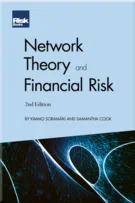An Invisible Framework
Ariane Chapelle and Michael Sicsic
An Invisible Framework
Introduction
Operational Risk in Four Letters
An Invisible Framework
Small is Beautiful in OpRisk Management
The Business Value of ORM
How to Minimise ‘People Risk’
The Missing Piece
Risk Appetite and Framework
From Russian Roulette to Overcautious Decision-making
The Importance of Preventive KRIs
How to Build Preventive Key Risk Indicators
Unlocking KRIs
Six Steps for Preventive KRIs
Have Your Cake and Eat It
Conduct, Not ‘Conduct Risk’
How to Manage Incentives
Is Reputation Risk Overstated?
What Regulators Want
Conduct & Culture
OpRisk Takes Forward Steps at OpRisk Europe 2014
Modern Scenario Analysis
The Rogue’s Path
Rogue Trading No Training: The Connections
What Brexit Teaches OpRisk
OpRisk Survey Shows the Insidious Effects of Political Risk
Discarding the AMA Could Become a Source of OpRisk
UCL Research Shows that SMA Reforms Introduces Capital Instability and Discourages Risk Management
Memo to Bank CEOs: Treat OpRisk with More Respect
Don’t Let the SMA Kill OpRisk Modelling
Recent years have seen the development of a multitude of risk management frameworks of all shapes, colours and forms, general or specific, complex, multidimensional or basic. In the face of the mounting jargon and technicality of the risk management profession, it is important to remember three fundamental roles of the risk function – none of them to do with vocabulary and techniques, or even with the management of risks.
Risks must be managed where they arise – that is, at the level of each operation or each transaction in the business. This is why we prefer the term “risk function” to “risk management”, referring to an activity rather than a role: an activity to be carried out by the business.
Risk frameworks are technical structures helping risk professionals to understand how risks and controls do or should operate within an organisation, but frameworks do not need to be a preoccupation or a burden for the business.
EXPERTISE AND ROLES OF THE RISK FUNCTION
The risk function should fulfil three roles: (1) to assist in the definition of risk appetite for the business and the board; (2) to monitor the risk exposure within the risk appetite, and to own the risk management
Copyright Infopro Digital Limited. All rights reserved.
As outlined in our terms and conditions, https://www.infopro-digital.com/terms-and-conditions/subscriptions/ (point 2.4), printing is limited to a single copy.
If you would like to purchase additional rights please email info@risk.net
Copyright Infopro Digital Limited. All rights reserved.
You may share this content using our article tools. As outlined in our terms and conditions, https://www.infopro-digital.com/terms-and-conditions/subscriptions/ (clause 2.4), an Authorised User may only make one copy of the materials for their own personal use. You must also comply with the restrictions in clause 2.5.
If you would like to purchase additional rights please email info@risk.net









